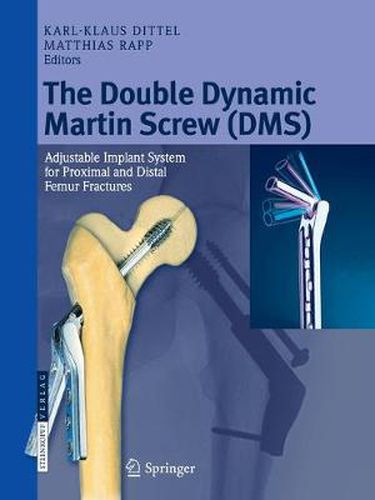Readings Newsletter
Become a Readings Member to make your shopping experience even easier.
Sign in or sign up for free!
You’re not far away from qualifying for FREE standard shipping within Australia
You’ve qualified for FREE standard shipping within Australia
The cart is loading…






This title is printed to order. This book may have been self-published. If so, we cannot guarantee the quality of the content. In the main most books will have gone through the editing process however some may not. We therefore suggest that you be aware of this before ordering this book. If in doubt check either the author or publisher’s details as we are unable to accept any returns unless they are faulty. Please contact us if you have any questions.
The scope and importance of hip fractures is almost incomprehensible. With a world wide incidence of close to 2 million cases per year, these fractures pose a daunting challenge to our ability to affect and treat this epidemic. The incidence of these fractures is predicted to grow to 6 million in 2050 including a near term baby boom spike. Add the hospital mortality rate of up to 4% and the one mortality of from 8% to 20% and the life ending effect of these fractures becomes a glaring reality. Of those who initially survive their fracture, about 50% never walk the same again. The social problem in the care of these elderly people is enormous. Of course, any real solution to this problem will include education, prevention, surgical and hospital treatment protocols, long term rehabilitative efforts, social - justments and a generous contribution of money. This publication is primarily directed to the amplification of a new treatment modality that addresses only a fraction of the problem. It is, however, a quantum leap in the evolution of fixation with compression hip screws which are still the gold standard for surgical stabilization of pertrochanteric hip fractures. The Dynamic Martin Screw (DMS) addresses the issue of adjustability of the fixation angle with appropriate mechanical strength characteristics that were la- ing in its historical predecessors.
$9.00 standard shipping within Australia
FREE standard shipping within Australia for orders over $100.00
Express & International shipping calculated at checkout
This title is printed to order. This book may have been self-published. If so, we cannot guarantee the quality of the content. In the main most books will have gone through the editing process however some may not. We therefore suggest that you be aware of this before ordering this book. If in doubt check either the author or publisher’s details as we are unable to accept any returns unless they are faulty. Please contact us if you have any questions.
The scope and importance of hip fractures is almost incomprehensible. With a world wide incidence of close to 2 million cases per year, these fractures pose a daunting challenge to our ability to affect and treat this epidemic. The incidence of these fractures is predicted to grow to 6 million in 2050 including a near term baby boom spike. Add the hospital mortality rate of up to 4% and the one mortality of from 8% to 20% and the life ending effect of these fractures becomes a glaring reality. Of those who initially survive their fracture, about 50% never walk the same again. The social problem in the care of these elderly people is enormous. Of course, any real solution to this problem will include education, prevention, surgical and hospital treatment protocols, long term rehabilitative efforts, social - justments and a generous contribution of money. This publication is primarily directed to the amplification of a new treatment modality that addresses only a fraction of the problem. It is, however, a quantum leap in the evolution of fixation with compression hip screws which are still the gold standard for surgical stabilization of pertrochanteric hip fractures. The Dynamic Martin Screw (DMS) addresses the issue of adjustability of the fixation angle with appropriate mechanical strength characteristics that were la- ing in its historical predecessors.